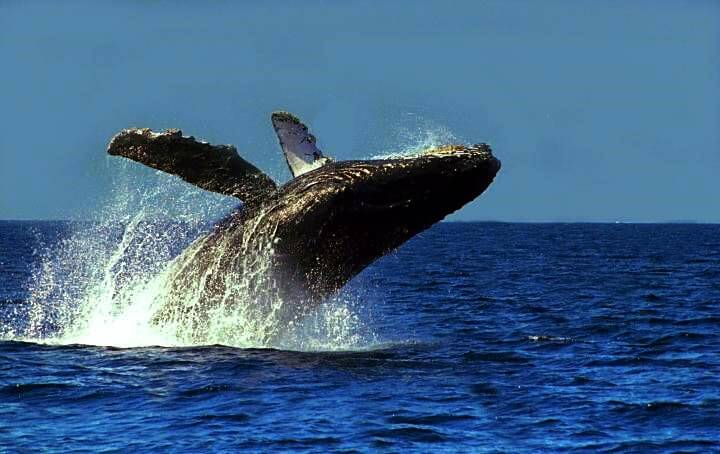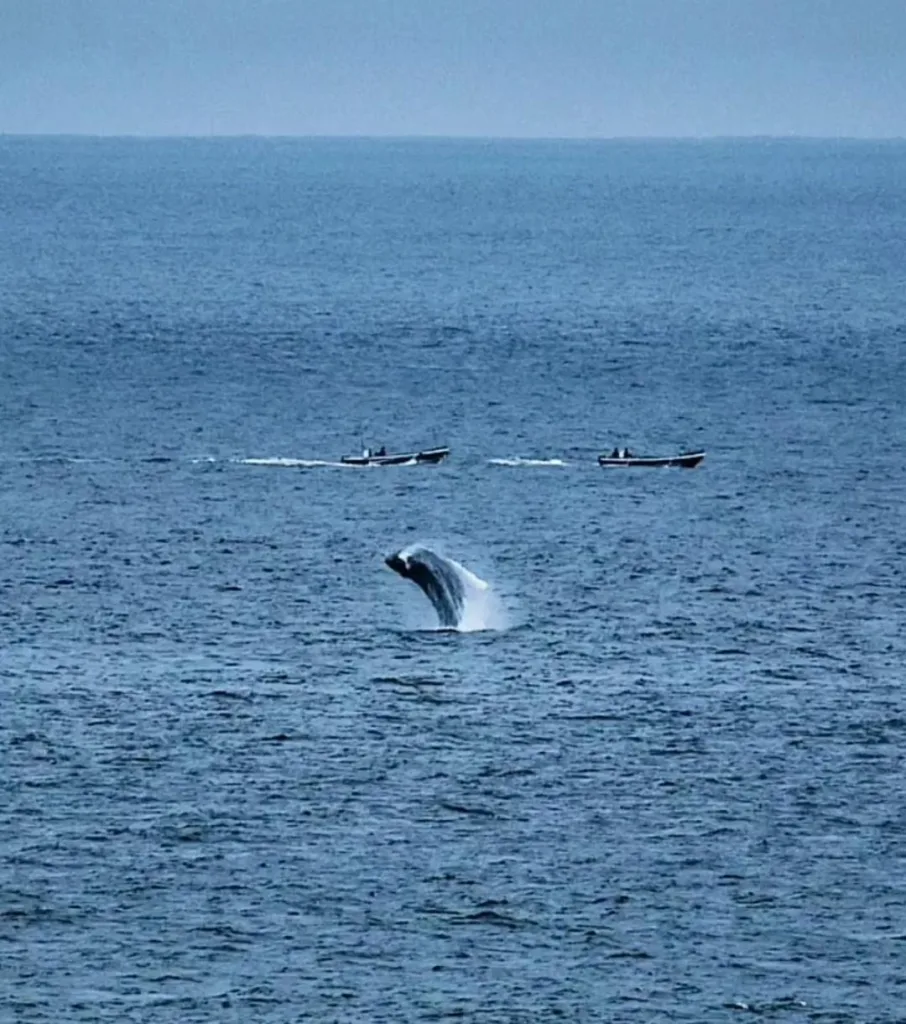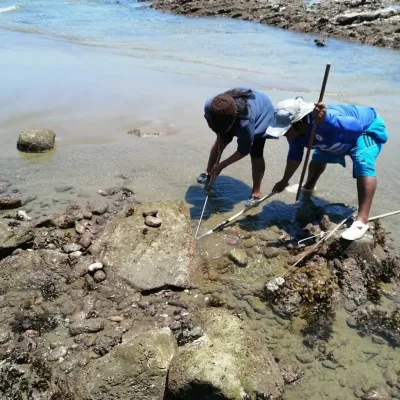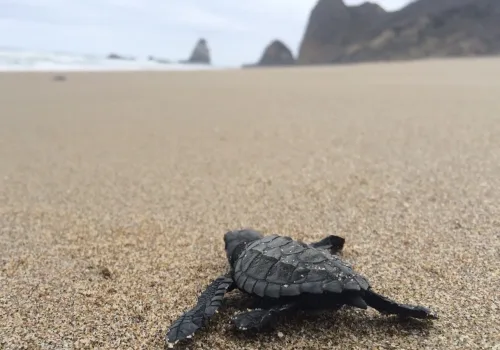Reserves and Wildlife
From crabs to apes, from pelicans to sea turtles, from whales to blue-footed boobies, from wonderfully perfect beaches to tropical forest and high cliffs.
There’s lots of wildlife and natural beauty to discover around Santa Marianita..
Nature and Ocean all around you
Welcome to Adventure
Humpback Whales.
Between June and September, these gentle giants migrate along the Pacific coast of South America to have their newborn in warm Ecuadorian waters.
You can spot them easily from far, up closer, or very close up.

Getting Closer by kite, SUP, Boat
Both scary and amazing, getting close with the whales is an honor of nature to treasure forever.
Whale season is in the middle of windy season, giving plenty of occasions to grab your luck and kite towards the place where you’ve seen a whale jumping out. Important is to look good where the whale is heading, so you have an idea where he might jump out next and keep your distance.
Using a stand-up-paddle to get to the whale is harder on luck and more effort to get there, but results in a magical experience. No wind nore other materials needed but the floating board and the paddle, you feel becoming one with the ocean and its giant inhabitants. There is a SUPs for rent at the kite schools.
Boat tours to go see the whales leave from Manta and Puerto Lopez. It might take an hour or two of skimming the sea, but guaranteed you’ll find some whales. Prices are about 15$ to 40$, depending if you include more activities (such as snorkeling with turtles and visiting isla de la plata, ‘the little galapagos’). An official guide from the national reserve protecting the whales gives good information about the whales.
Spotting them from land:
In Santa Marianita, the whales come extremely close to shore. From Punta La Barca’s hill you easily see several whales a day jumping out of the water.
No need to be staring at the water: the splashes are easily noticed while relaxing in the hammock or getting work done in the cabañita. Binoculars are available at Punta La Barca to get a better view.

Octopus, Lizards & Iguanas
Pelicans, crabs, octopus, lizards, iguanas and different kinds of small birds are daily living companions at Punta La Barca.
Pelicans come by specifically at sunrise and sunset, dive-fishing between the waves. Iguanas, crabs, squids and a huge variety of shells are only a few more examples of the beach fauna.
The beautifully green-coloured 60cm-long iguanas are a bit more shy, but they like our flowery showers so you might get a glimpse of them getting your daily bath.
Hike the 4 hour Ruta de Las Playas Desiertas to get the most of the coastal nature, a route from our beach to San Lorenzo, by-passing rocky boulder-points.


Sea Turtles
Three different species of giant sea turtles come around at different times during the year. They lay their eggs on the beach, which come to life about 2-3 months later, leaving hundreds of baby turtles to begin their struggle to get towards the sea before the sun dries them out. Different opportunities for meeting the turtles:
While swimming/SUP/kitesurfing: if you notice floating stones while swimming in the sea, go closer and you’ll see it’s the cute head of a giant sea turtle sticking out of the water.
Look for the nests and see them come out in the early morning! Herefore, the beach just south of Santa Marianita (San Lorenzo) is your best guess. Still, know you’ll have to be patient and lucky to witness the baby turtles
Snorkeling with the turtles is organized at isla de la plata. Boats leave from Puerto Lopez, a day trip away.
Tropical forest in Pacoche
An extreme microclimate rules the area around Santa Marianita. As dry as it gets at the beach (barely 5 days of rain in a whole year), 10 km further inland a tropical forest arises from almost daily rain. A dry river connects the tropical forest to the sea.
Know this area of tropical forest, monkeys, tarantulas, and giant trees better taking a guided walk with the local guides from refugio de vida silvestre Pacoche.
Punta la Barca food forest in Jipijapa
Join us to a wonderful 5 acre piece of food forest inland, that provides plantains, fruit, yuca and much more for our local community.

Machalilla National Park & Isla de la Plata
Only 2 hours away is the national park of Machalilla, with its spectacular cloudforest (which you can discover by horse and even camp the night with a local community guide!), breathtaking variety of beaches (including ‘the most perfect beach’ los frailes), natural sulfur baths, museums about pre-inca culture, and isla de la plata (also called little galapagos).

